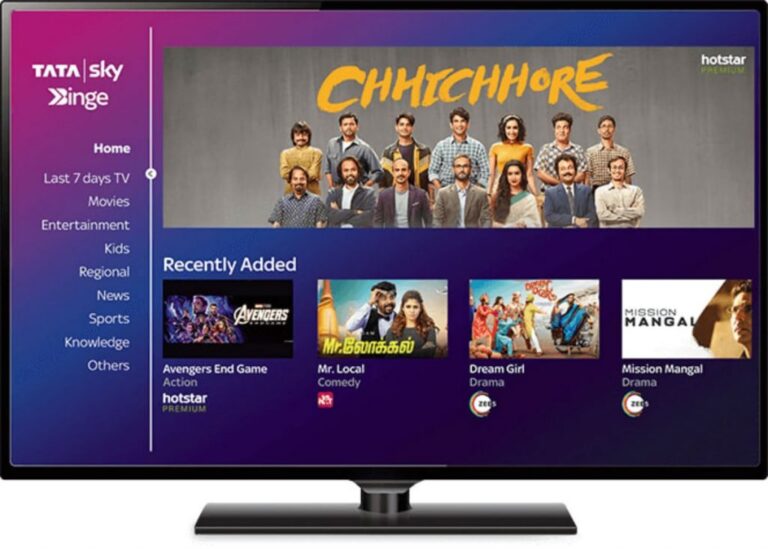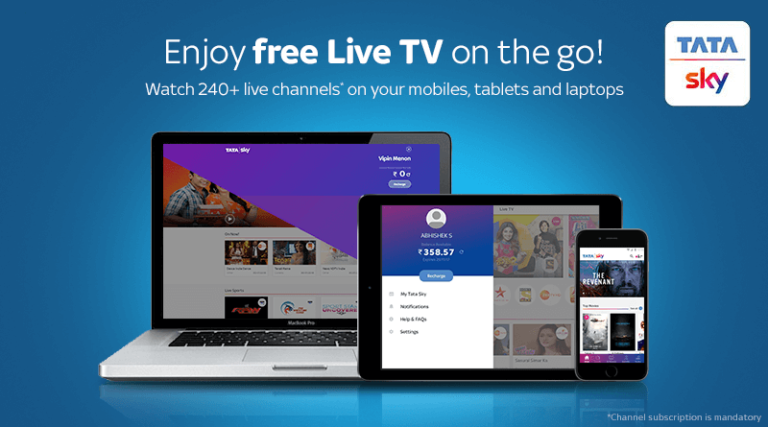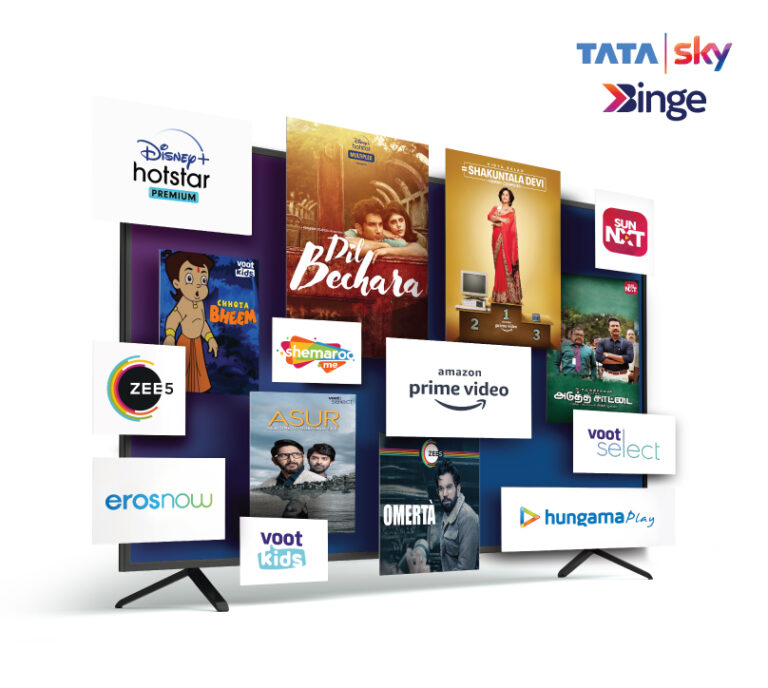Metrics that matter to Tata Sky: KPIs
As Senior Vice President of New Product Development at Tata Sky, a Mumbai-based direct broadcast satellite service provider and joint venture between Tata Sons and TFCF Corporation (formerly known as Twenty-First Century Fox, Inc.), Vinati Malik is responsible for driving innovation in product features, and enhancement in customer engagement and experience.
In the latest installment of our Metrics that Matter series, we’ll learn:
- How OTT has evolved over the past decade
- The impact COVID-19 has had on the business
- What makes a good PM vs. a great PM
Tell us a little bit about the company. How do you differ from your competition?
At Tata Sky, we’re not just industry leaders. We have helped create the category and the industry. Many things that the industry, or DTH (direct to home) is known for today in India, has been what we’ve helped co-create. If there are books about it, if there are rules to run it, then we’ve helped write them.
To that extent, we’re very proud. Tata Sky has been around for 14 years, but what’s special about us is that the customer is the biggest part of what we do. What’s also important to us is innovation. Delivering content of choice through useful innovations while keeping it easy and simple for the customer – that’s what differentiates us from our competition.
Tell me about your background and why you like working in product?
I’ve been with Tata Sky since the company started, and my roles have always been linked to product and the customer. I tell all the new recruits that I’m practically a dinosaur here. They can’t believe I’ve been working in the same company and in the same type of role for more than five years.
My background is diverse. I started my career in advertising and then moved on to film and TV production for many years before I found my way to Star TV as an online content producer, and then worked on a nascent project that eventually became Tata Sky.
Product at Tata Sky is an interesting techno-business-marketing role because it’s diverse and involves a nice mix of the left and right brain, which makes for a very rich and challenging mandate. You could start your day by helping solve a technical issue that’s causing problems for subscribers, and end your day listening to a script for an ad that’s being made for a new product that you’re launching.
What’s that one thing you want your users to do in your product?
Consume content. Tata Sky is responsible for providing your entertainment of choice, on the screen of your choice, at a time of your choice—and doing it seamlessly. Whatever we build, whatever we do, that’s the end goal: for it to be such a seamless and easy experience that Tata Sky should be your choice of content provider irrespective of the screen or where it is.
What key metrics do you care about?
My team’s key objective is to launch a product and then to keep building features on top of that product to power better usage, better engagement, better experience—to ensure that the customer continues to use and therefore continues to subscribe. The business objectives on our mobile app are to get downloads and registrations, to get higher monthly or daily active users, to get more time spent on the platform, etc.
Everybody has a slightly different lens through which they look at the analytics. At Tata Sky we’re trying to work on common dashboards to have a more uniform view and a common inflection point.
Mixpanel has helped us refine and even build out our KPIs further, on our connected products.

What changes have you seen in the products offered at Tata Sky in the last decade?
Tata Sky’s journey started with the large screen, and that’s still our core. We have 22 million subscribers who have set top boxes in their homes. Today, we’re more than just distributors of channels – we are distributors of content, and that content could be packaged as a linear service or an OTT app.
We wanted to stay ahead in terms of exploring viewers’ behavior and attitudes towards accessing content, therefore, now we’re becoming screen-agnostic. If our customer moves from the big screen to the small screen, we’re able to provide a companion service to the set top box service for the small screen. It’s very different from what we were doing for the first 10 years of our business when we were largely focused on linear channels on the big screen.

Viewers in India have started watching unique content on OTT, and OTT apps in India have proliferated beyond the global players like Netflix and Amazon Prime Video. Tata Sky now partners not only with broadcasters but also with OTT players. We’ve got Disney+, Hotstar, Zee5, Voot and there are a few more in the pipeline onboarding in the next couple of months.
Our products reflect the journeys that our customers and technology have made over the years in content consumption – from one-way boxes to connected boxes, from the big screen to the small screen, from the set top box form factor of devices to smaller and different form factors, from limited content choices to almost unlimited selections to pick from.
How has COVID changed business for Tata Sky? Personally, I’m consuming more content but I’m wondering if this is what you are seeing at the macro level.
Every OTT app in India is reporting that their viewership has shot through the charts during the COVID lockdowns. People are watching hours and hours of online content. As far as channels go, there was a huge uptake in terms of consumption and in terms of customers who were recharging. Even customers who had been deactivated for a long period of time came back as they realized that they were going to be stuck at home for weeks. They wanted a better viewing experience and more channels.
Tata Sky has special interactive services in genres like fitness, music, games, learning content for children, and classic movies for senior citizens. With everyone stuck at home during lockdown, we picked out a bunch of these services, most relevant for a family at home, and we made them free for all subscribers, for a month. And of course, we saw an enormous uptake of consumption on those services.
After several weeks of lockdown, however, the content started drying up because the soaps and general entertainment couldn’t film and there were no live sports (especially cricket). Due to the lack of new content, channels brought back retro content. Parents were sitting at home with their children and they got the opportunity to watch these shows again with their kids.
But over time, COVID has had, and will have, a deeper economic impact and this will reverberate through business and consumption patterns. No business is completely immune to this and we will do what is necessary to ease our customers through this time.
How has Mixpanel helped the team optimize their product?
Tata Sky Binge is the aggregator app. It has to be the single largest OTT catalog in the country, because its a combined catalog of eight of the biggest OTT players in the country. Recommending from such a large catalog is difficult. Mixpanel helped us to get a better sense of how the recommendations were being picked up and what was being consumed.
In an ideal world, all our partners would be on Mixpanel, and we should find a way to be able to exchange data online, seamlessly and almost real time.

Before COVID, what were some of the retention strategies that were used at Tata Sky?
Tata Sky has a strong retention practice in our core business because churn is a big problem in this price conscious market. We have a dedicated team that works only on subscriber retention. We’re constantly studying recharge patterns, the customers and customer cohorts who are recharging (and not recharging) and identifying vulnerable subscribers who may need focused retention efforts. Our packaging is also designed to keep customer needs in mind. We also recognize that subscribers need to optimise their choices and spends from time to time and our digital tools for self-serve are built with that focus and intent.
In terms of product-focused retention strategies, on Binge, we’re bringing in a lot of new content: documentaries, scientific programs, original movies, etc. Binge provides a premium subscription, so the content needs to be richer. But it is a process to constantly build and reinforce the value proposition for customers because they need to feel that it is worth paying for. Mixpanel is a very big part of helping us do that as well. A lot of decisions we make about content and on improvement of product features—search, recommendations, personalization—are driven by the Mixpanel analytics that we get on the mobile app and on Binge.
How do you prioritize product releases?
On our platform, we needed to improve search. But it’s massive. Where do you start? Mixpanel has helped us be able to prioritize our product features.
We have a lot of objectives that we need to meet, and we need to be able to refine our roadmap and prioritize the roadmap better, and analytics helps us to do that constantly. Mixpanel helps us understand what exactly people are searching for, where we’re breaking off in search, where we’re not getting accurate results, etc. And even within search, we were able to prioritize saying, “This is the piece that we need to take up first because these are the errors we’re seeing the most.”
Today, we’re in the process of launching a whole new search experience on mobile, and subsequently on Tata Sky Binge. And I’m happy to say that we’re very pleased with the path it’s taken, and I think analytics played a big role there.
What’s different about your offline and online offerings?
We get a wealth of leads and information from connected devices through Mixpanel that are not available to us from an unconnected device. With our offline offerings, we don’t know whether somebody is attempting to watch a channel, seeing that they need to subscribe, and then choosing not to subscribe. I’d like to see a time when Mixpanel can be used effectively to power our unconnected business.
We’re trying to see how we can leverage what we’re learning from Mixpanel through to the other side of our business, and then also what we’re learning from the other side of the business to try and feed it into our connected devices so we can recommend content better. When we know upfront what a customer is subscribed to, we may as well recommend on that basis. Recommendation engines normally wait to learn from a customer’s behavior, whereas we already have some information about this customer: they’re subscribed to English content, to an Indian-language channel, to kid’s content. So even on a cold start, we have some information about them.
We’re working towards our big dream of having a 360° single view of the customer. There’s the customer’s behavior, consumption journey on devices, navigation of the product, etc. and then there’s this journey on the entire platform in terms of billing, recharge, pack subscriptions, etc. There is a wealth of data to mine and unify for better insights and decision making.
What makes a good PM vs. a great PM?
A good product manager is one who can think product and innovation and incredibly technologically forward features… but a great product manager is one who never loses sight of their customer. They continually put themselves in the place of their customer, evaluating themselves at every step, behaving and thinking like the average user.
It must never be about using technology for the sake of its availability.
I understand that it’s very easy to lose sight because you just want the best and the hottest features, and you want to be the first to launch everything. But it’s so important to understand the average user of your product—not the most technologically savvy and not the least likely to use, but the average user. And if you can actually keep that user in mind when you’re designing your product, that’s what makes you a great product manager. You carry your customer with you!


